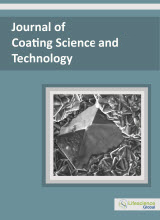|
|
|
Abstract: The 2xxx aluminum alloys are largely used in aeronautical structural applications (fuselage, wings) due to their high mechanical strength/weight ratio, but have poor localized corrosion resistance. Their anticorrosive protection is generally ensured by multi-layered coatings based on inorganic and organic layers. The usual technique to evaluate the corrosion protection efficiency provided by the coatings is the salt spray test (ASTM B117). Nevertheless, though the test is employed worldwide, it presents some weak points, such as: it is a destructive test, subjectivity of test (only visual evaluation by the operator), low correlation between conditions of the test and real conditions, low reproductibility. The electrochemical impedance spectroscopy would be an alternative: non-destructive test, objectivity of the test (impedance measurement), the test can be performed in-situ. In this work, uncoated and coated AA2024-T3 alloys were tested in solutions of NaCl 3.5wt% at room temperature. The coatings were: (a): chromating conversion coating; (b): (a) + epoxy primer; (c): (b) + top coat; (d): chromic anodizing coating; (e): (d) + epoxy primer; (f): (e) + top coat. The specimens of AA 2024-T3 divided into seven groups of duplicates (each group representing a superficial state, non protected or a type of coating) were submitted to electrochemical impedance spectroscopy at corrosion potential using frequencies in the 0.1 to 100 kHz range. To ensure reliability of the results, a design of experiment based on a saturated factorial design was applied involving two control variables (treatment of surface and alternating current frequency), one response variable (impedance modulus) and two blocks (samples and repetitions). Some simulations of surface degradation via standardized accelerated tests (salt spray test) and simulations of common defects in process or assembly operations in aircraft manufacture according to valid standards in the aeronautical industry were also made on coated AA2024-T3 specimens. These surfaces were also tested using electrochemical impedance spectroscopy under the same experimental conditions (3.5 wt% NaCl, room temperature, 0.1Hz-100kHz). The statistical analysis of results showed the effectiveness of the application of electrochemical impedance spectroscopy to assist in the quality control of processes of surface treatments in the aerospace sector. The synergic effect involving the care taken in the experimental conditions, the type of experimental design and the sampling size were important to validate the results facing violations of hypotheses in the analysis of variance method. Each coating on AA2024-T3 alloy, and also the bare metal, is characterized by an Impedance versus Frequency Bode curve, sort of fingerprint, which can be used to identify the coating and to evaluate easily and accurately its quality. The results have demonstrated promising and allow to establish strategies for implementation of the electrochemical impedance spectroscopy technique in surface treatment processes. Keywords: AA2024 alloy, corrosion, EIS, non-destructive test, aeronautic industry. |





